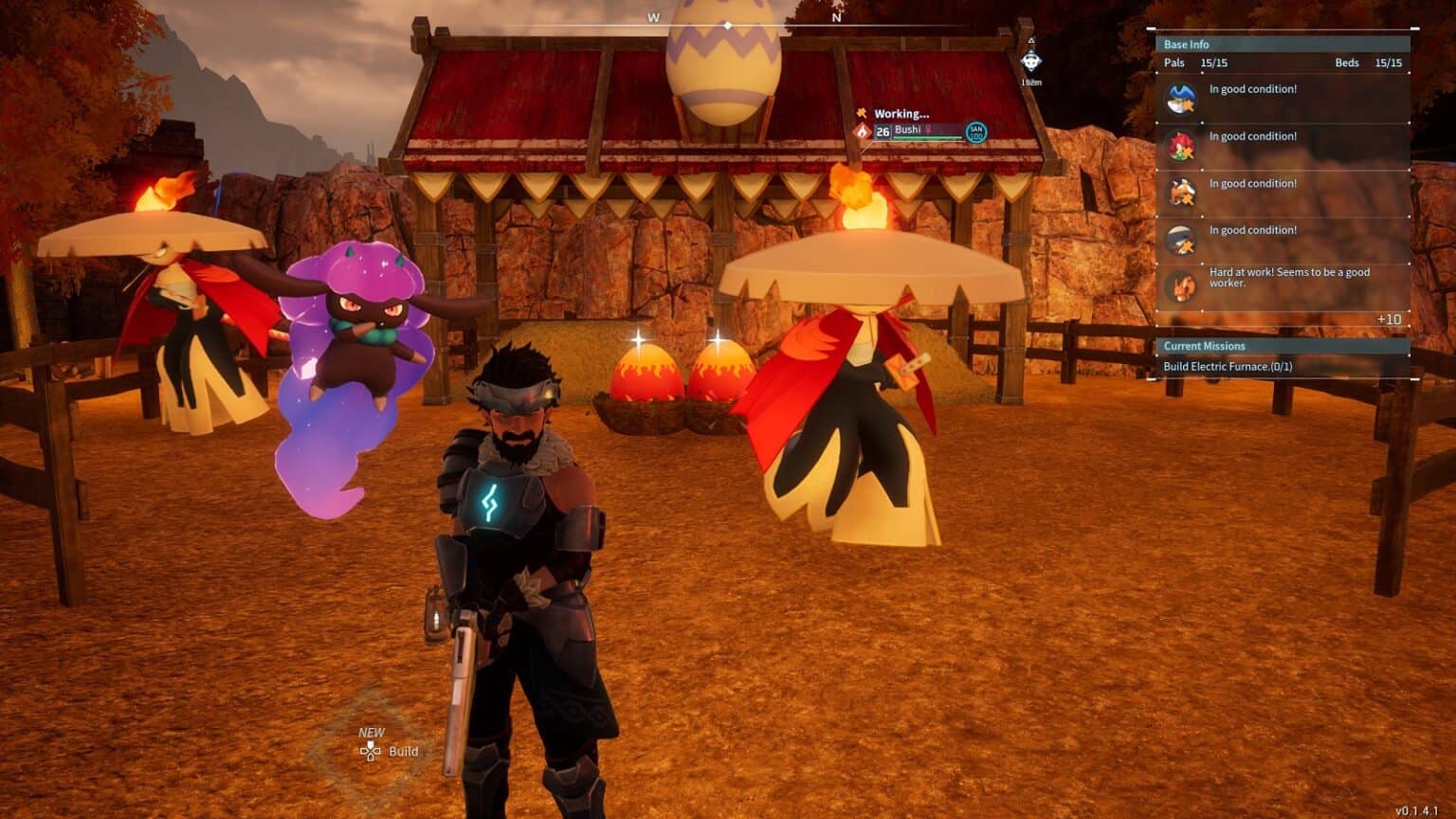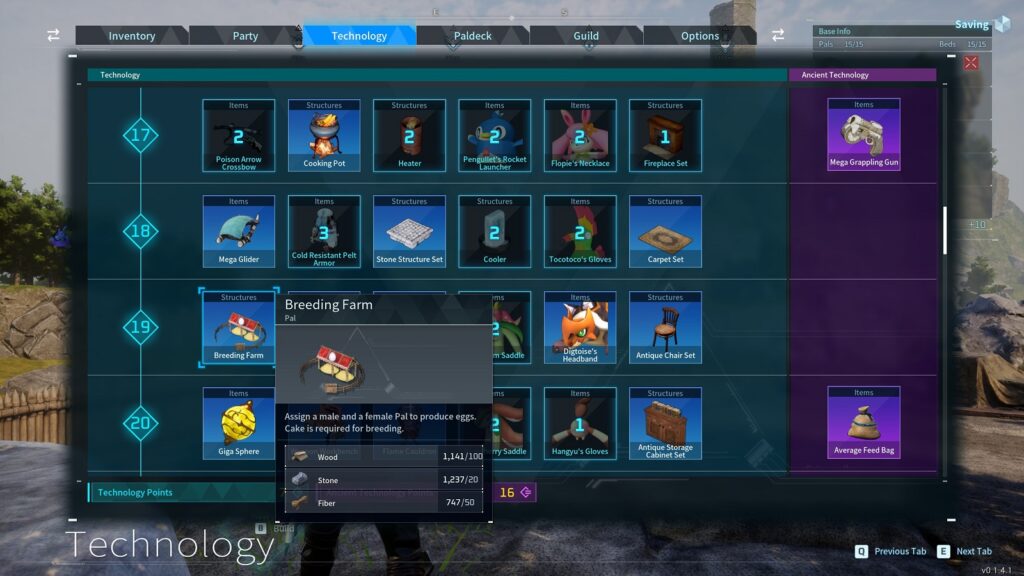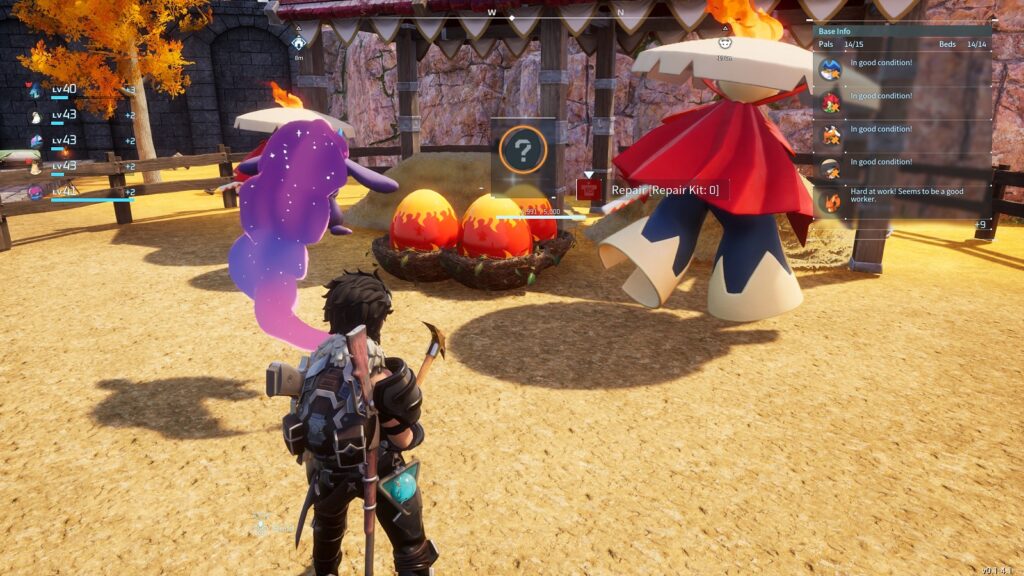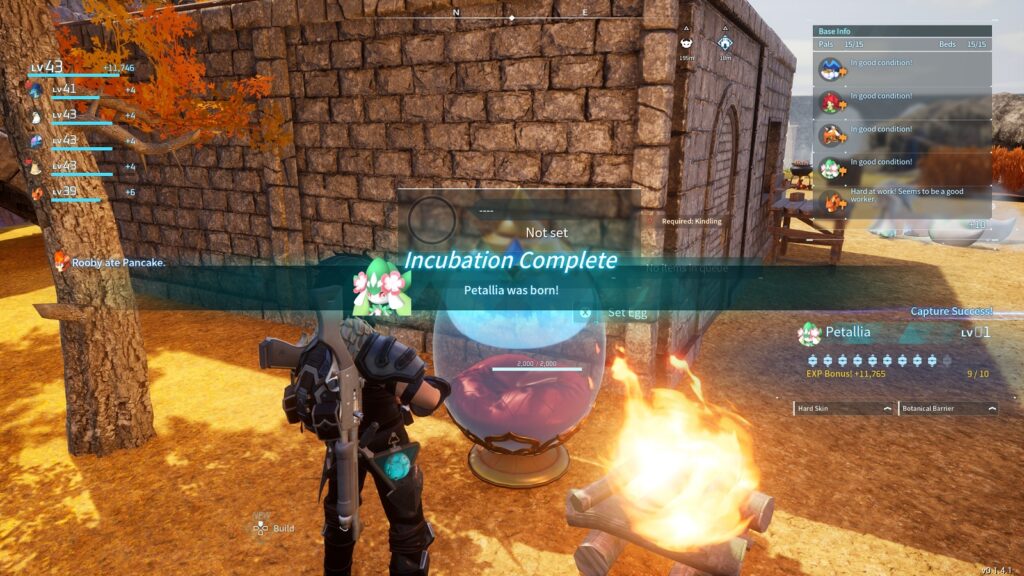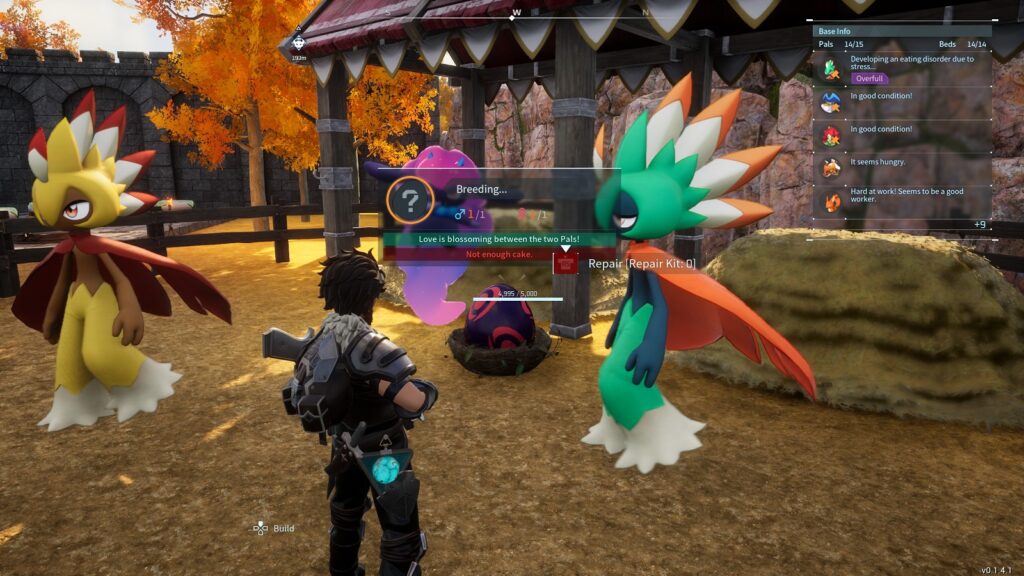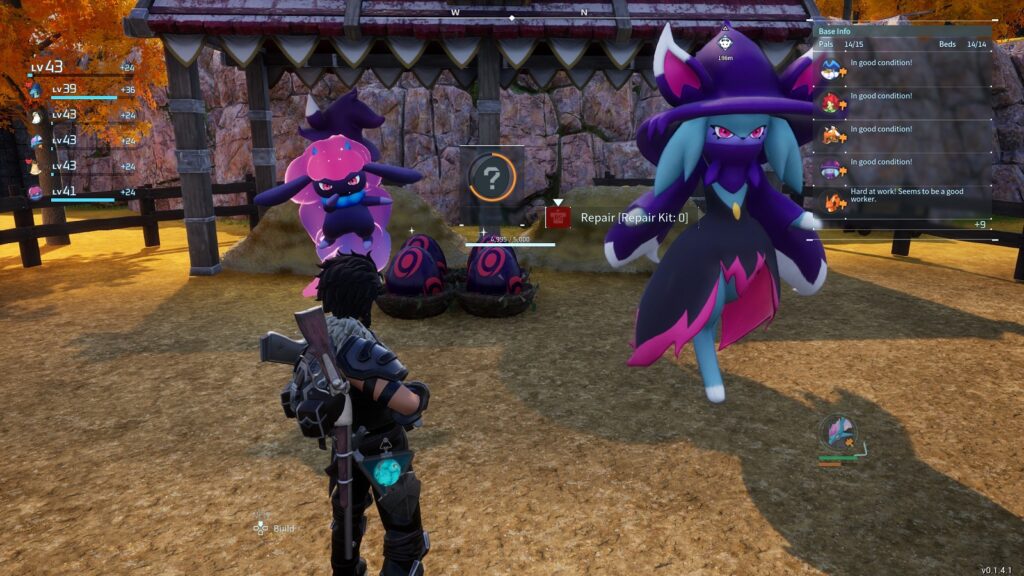The road to becoming the very best trainer of all time hinges on your ability to not only perform in the heat of battle but also to train the leanest and meanest Pal to have ever existed. But power like that does not simply fall into your lap, sometimes you’ll need to breed the next generation of powerhouses yourself.
In this article, I’ll tell you how to use the Breeding Farm in Palworld. This includes its basic functions, what you need to be aware of, and some combinations you might find shocking, to say the least.
How to Access the Breeding Farm in Palworld
The Breeding Farm becomes accessible as soon as the player reaches Level 19 and has unlocked it from the tech tree. There are no prerequisites for unlocking the tech unless you count the Cooking Pot as it is a requirement for baking cakes.
It should be noted that the Breeding Farm takes up a lot of space. If you want to have a functional one in your base, make sure there’s enough free space to accommodate it. By my estimate, you’ll need 9 foundation blocks worth of space to comfortably have it in your base. However, some clipping is acceptable, especially for the wooden fences surrounding the main farm structure.
How to Use the Breeding Farm
To use the Breeding Farm, you are required to pick up and drop one male and one female Pal inside the farm. The facility only recognizes the ones you put in it. Drop any more Pals and the Breeding Farm will release one of the Pals to make room for the new addition.
The next step is to put a cake inside the wooden box at the entrance of the Breeding Farm. Somehow it is integral to the whole breeding process. The couple will eventually produce eggs matching the number of cakes that were put inside the wooden box. I won’t go into the details of making the cake in this article. If you want to know how to make one, check out my article going over the stuff you need to make cakes in Palworld.
Now, it is only a matter of time until an egg clutch appears in the middle of the farm.
From what I can tell, the time it takes for an egg to be produced varies slightly depending on the Pals’ rarity. But very slightly. You only see a clearer distinction once the eggs are in the Egg Incubator. (Another important piece of tech needed to complete the breeding process.) Small or common eggs will hatch after 5-10 minutes. Very large eggs can take up to an hour in real-world time before they hatch.
There are a few rules you need to be aware of when breeding Pal in Palworld:
- The newly hatched “child” will have an expected stat range that is in line with the type of Pal it is born as. For instance, a Pal born into an offensive-oriented Pal type will not have a defensive stat that is greater than their offensive stat, regardless if both parents have extremely high defense stats.
- There is always the chance of the newly hatched Pal to get all the traits of the parents or have no passive traits at all.
- Pals do not get stronger through breeding. Pals only become stronger through leveling and condensing Pals of the same type. The latter requires a Pal Condensor to make that happen.
- The Pal born from an egg will always start from Level 1. It doesn’t matter if the “parents” are also at Level 1, or they are at Level 50.
- Despite never leaving the Breeding Farm, both parents still need beds somewhere within the base to prevent their SAN from dropping.
- Alpha and Shiny Pals can mate with regular Pals with the caveat that the child will always be a regular Pal.
What is the purpose of the Breeding Pals?
The purpose of breeding Pals is to pass on favorable passive traits to the next generation. Pal trainers hope that the newly hatched Pal will have inherited the parents’ passive traits and perhaps picked up new favorable traits themselves.
But it’s never a guaranteed thing. Some Pals may only inherit one of the parents’ passive traits or neither trait is passed on. This is why it is perfectly ok to have a clutch of 4-5 eggs with the expectation of one or more of them getting better traits. I’ll leave it to you as to what to do with the other Pals.
Breeding Farm Combinations
You can breed Pals of the same type and the resulting Pal is going to be the same one as their parents. You can also breed Pals of two different types. This will usually result in a completely different Pal.
Some notable examples of this are as follows:
- Pengullet + Sparkit = Depresso
- Relaxaurus + Sparkit = Relaxaurus Lux
- Relaxaurus + Nitewing = Quivern
- Killamari + Nitewing = Digtoise
- Mossanda + Rayhound = Grizzbolt
- Mossanda + Petallia = Lyleen
- Relaxaurus + Grizzbolt = Orserk
- Relaxaurus + Suzaku = Astegon
- Penking + Bushi = Anubis
- Penking + Rooby = Kitsun
- Kitsun + Astegon = Shadowbeak
- Frostallion + Helzephyr = Frostallion Noct
- Shadowbeak + Helzaphyr = Cryolinx
- Penking + Melpaca = Blazehowl
- Mammorest + Wumpo = Ice Mammorest
- Kingpaca + Reindrix = Ice Kingpaca
It should be noted that the Legendary Pals bred through the Breeding Farm will not be able to get their respective Legedary passive traits. That is only possible after capturing and/or defeating the Legendary Pal that’s marked on the world map.
For more information on breeding results, check the Breeding Calculator courtesy of the folks over at Palworld.gg.
At its most extreme, Pal Breeding can be used to pass on Legendary traits to Pals that would normally never get the trait if caught out in the wild. Imagine a Lamball having the ‘Legend’ trait. The breeding lines required to make it happen would both shock and amaze casual players of the game. But it is possible, and the game allows for something like it to happen. And that’s just another reason why players love Palworld the way that they do.



